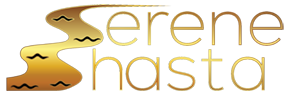Introduction
Buying a home is one of the most significant financial decisions you’ll make in your lifetime. It’s not just about finding the perfect property; it’s equally about securing the right mortgage. With numerous options available, each with its own nuances, selecting a mortgage can feel overwhelming. This comprehensive guide aims to simplify this process, equipping you with the knowledge to make an informed decision that aligns with your financial goals and lifestyle.
This article delves deep into the essentials of mortgage selection. Starting with an understanding of various mortgage types, we explore the importance of assessing your financial readiness, the intricacies of the mortgage pre-approval process, and how to effectively compare and negotiate mortgage offers. Whether you’re a first-time homebuyer or a seasoned property investor, this guide provides valuable insights to aid your decision-making journey.
Our goal is to demystify the complex world of mortgages. By the end of this article, you’ll not only comprehend the different mortgage types and what they entail but also know how to evaluate your financial position, understand the significance of mortgage pre-approval, and be able to confidently compare and negotiate the best mortgage terms. Remember, the right mortgage can make your dream of home ownership a reality while ensuring financial stability and peace of mind.
Mortgage Types
A. Fixed-Rate Mortgages
Definition and Features: A fixed-rate mortgage keeps the same interest rate throughout the loan term, offering stability and predictability in your monthly payments. This type is ideal for those planning to stay in their home for a long time.
Pros:
- Predictable Payments: Your monthly mortgage payment remains constant, making budgeting easier.
- Long-Term Stability: Protected from rising interest rates, which is beneficial in a fluctuating economy.
Cons:
- Higher Initial Rates: Fixed-rate mortgages typically start with a higher interest rate compared to adjustable-rate mortgages.
- Less Flexibility: Refinancing is required to take advantage of falling interest rates.
B. Adjustable-Rate Mortgages (ARMs)
Definition and Features: ARMs start with a lower interest rate that adjusts after a set period, based on market conditions. The initial lower rate period varies, commonly 5, 7, or 10 years.
Pros:
- Lower Initial Payments: Beneficial for those expecting a future income increase or planning to move before the rate adjusts.
- Potential for Lower Interest Rates: If interest rates fall, your rate may decrease without refinancing.
Cons:
- Uncertainty: Monthly payments can increase significantly, making budgeting challenging.
- Risk of Higher Interest Rates: If interest rates rise, so do your payments.
C. Government-Insured Mortgages
- FHA Loans: Backed by the Federal Housing Administration, offering low down payments and flexible credit requirements.
- VA Loans: Exclusive to veterans and active military members, featuring no down payment and no private mortgage insurance (PMI) requirements.
- USDA Loans: Aimed at rural homebuyers, offering zero down payment options.
Pros: Lower barriers to entry, such as lower credit scores or down payments.
Cons: May come with additional fees or requirements (e.g., mortgage insurance).
D. Jumbo Mortgages
Definition: Designed for expensive properties that exceed conforming loan limits set by Fannie Mae and Freddie Mac.
Pros: Enables purchasing high-value properties.
Cons: Stricter credit requirements and larger down payments.
E. Interest-Only Mortgages
Definition: Allows paying only interest for a specific period, after which you start paying both principal and interest.
Pros: Lower initial payments.
Cons: Higher total cost over the loan life and increased payments after the interest-only period.
Financial Self-Assessment
Before diving into the mortgage pre-approval process, it’s essential to conduct a thorough financial self-assessment. This step is critical in determining how much mortgage you can comfortably afford without overstressing your budget.
1. Analyze Your Credit Score: Your credit score significantly influences the interest rate you’ll receive. Higher scores typically result in lower rates. Obtain a copy of your credit report, review it for accuracy, and address any discrepancies.
2. Calculate Your Debt-to-Income Ratio (DTI): Lenders use DTI to gauge your ability to manage monthly payments. It’s the percentage of your gross monthly income that goes towards paying debts. A lower DTI ratio is more favorable.
3. Evaluate Your Savings: Assess your savings not just for the down payment but also for closing costs, moving expenses, and an emergency fund. Having a robust savings account can make you more attractive to lenders.
4. Consider Your Employment Stability: Lenders look for consistent and reliable income. A steady job history indicates a lower risk to lenders.
Mortgage Pre-Approval
After assessing your financial health, the next step is seeking mortgage pre-approval. This process gives you a better idea of what you can afford and shows sellers that you’re a serious buyer.
1. What Is Mortgage Pre-Approval? It’s a lender’s offer to loan you a certain amount under specific terms. Pre-approval is based on your actual financial data, unlike pre-qualification, which is an estimate.
2. Documents Needed for Pre-Approval:
- Proof of Income: Recent pay stubs, tax returns, W-2s, or 1099s.
- Proof of Assets: Bank statements and investment account statements.
- Credit Information: Lenders will pull your credit report.
- Employment Verification: Proof of stable employment.
3. The Benefits of Pre-Approval:
- Clarity on Affordability: Know exactly how much house you can afford.
- Increased Attractiveness to Sellers: Demonstrates financial readiness and seriousness.
- Faster Closing: Pre-approval can speed up the mortgage process once you find a home.
Budgeting for Your Mortgage
Understanding the full cost of homeownership is crucial. Beyond the mortgage payment, consider other expenses:
1. Property Taxes: These vary by location and can significantly impact your monthly payments. 2. Home Insurance: Required by lenders and important for protecting your investment. 3. Maintenance and Repairs: Set aside funds for unexpected repairs and regular maintenance. 4. Utilities and HOA Fees: These ongoing costs should be factored into your budget.
Adjustable vs. Fixed Expenses
When budgeting, differentiate between adjustable expenses (like utilities and maintenance) and fixed expenses (like your mortgage payment). This understanding helps in selecting the right mortgage type and terms.
Navigating Interest Rates and Loan Terms
Interest rates fluctuate based on market conditions and your personal financial situation. A lower rate can save you thousands over the life of your loan. Also, consider the loan term. Common terms are 15, 20, or 30 years. Shorter terms usually have higher monthly payments but lower overall interest costs.
Comparing Mortgage Offers
Once pre-approved, you might receive multiple mortgage offers. Here’s how to effectively compare them:
1. Interest Rates: Compare the interest rates of each offer. Even a small difference can significantly impact the total amount paid over the life of the loan.
2. APR (Annual Percentage Rate): APR includes the interest rate plus any additional fees. It gives a more comprehensive picture of the loan’s cost.
3. Fees and Closing Costs: Understand all the fees involved, such as origination fees, appraisal fees, and closing costs. Some lenders might offer lower interest rates but with higher fees.
4. Loan Features: Some loans come with features like the ability to make bi-weekly payments, which can reduce your interest over time. Evaluate what features are most important to you.
Negotiating Loan Terms
Don’t hesitate to negotiate the terms of your mortgage. Here’s what you can discuss with lenders:
1. Interest Rates: If you have a strong credit profile, you might be able to negotiate a lower rate.
2. Closing Costs: Ask if any fees can be waived or reduced.
3. Loan Features: If a specific feature is important to you, like a flexible payment schedule, ask if it can be included.
Remember, it’s not just about getting the lowest interest rate but getting a mortgage that fits your overall financial goals.
Understanding Loan Types and Repayment Options
Revisit the different types of loans (fixed-rate, ARM, interest-only, etc.) and consider which aligns best with your financial situation and homeownership goals. Additionally, understand the repayment options. Some loans offer more flexibility than others in terms of making extra payments or refinancing.
Preparing for the Unexpected
Homeownership can come with unforeseen expenses. Ensure your mortgage choice leaves room in your budget for emergencies. Consider if your financial situation can handle an increase in payments if you choose an adjustable-rate mortgage.
The Final Decision: Matching Your Mortgage to Your Lifestyle
Your final mortgage choice should align with your lifestyle and future plans. For instance, if you plan to move within a few years, an ARM with a lower initial rate might be more beneficial. However, if you’re settling down for the long term, a fixed-rate mortgage could be more suitable.
Closing the Deal
Once you’ve selected the best mortgage offer, you’ll proceed to closing. This involves finalizing the loan terms, signing the necessary documents, and paying any remaining fees. After closing, the loan is disbursed, and you become the official owner of your new home.
Conclusion: Empowering Your Mortgage Decision
Choosing the right mortgage is a critical step in your home-buying journey. It requires a balance of understanding the market, assessing your financial situation, and aligning your mortgage choice with your long-term goals. Throughout this article, we’ve explored various mortgage types, highlighted the importance of financial readiness, and provided tips on comparing and negotiating mortgage offers.
Key Takeaways
- Understand Your Options: Knowledge of different mortgage types is crucial.
- Assess Financial Health: A thorough financial self-assessment guides your mortgage affordability.
- Seek Pre-Approval: This step is vital for understanding your budget and making you a competitive buyer.
- Compare and Negotiate: Look beyond interest rates and consider all aspects of mortgage offers.
- Plan for the Future: Choose a mortgage that fits your long-term goals and lifestyle.
It’s important to remember that life can be unpredictable. Ensure that your chosen mortgage allows flexibility for unforeseen circumstances. This might include changes in employment, interest rates, or personal circumstances.
As you embark on this significant journey, take the time to understand each aspect of the mortgage process thoroughly. Don’t hesitate to seek professional advice to navigate this complex terrain. Remember, the right guidance can make all the difference in securing a mortgage that’s not just financially sound but also tailored to your unique needs.
For personalized assistance in finding the right mortgage for you, contact us here at Sere Shasta. Our experienced team of real estate professionals have an entire network of Realtors we can work with, regardless of your location, to get you going in the right direction. We’re here to help guide you through every step, ensuring you make the best decision for your future. Reach out to us today to start your journey toward successful home ownership.
- The 1031 Exchange: The Secret Weapon of Real Estate Wealth - January 29, 2024
- What’s Up with the California Housing Market in 2024? - January 27, 2024
- What Is Escrow? Everything You Need To Know - January 27, 2024






